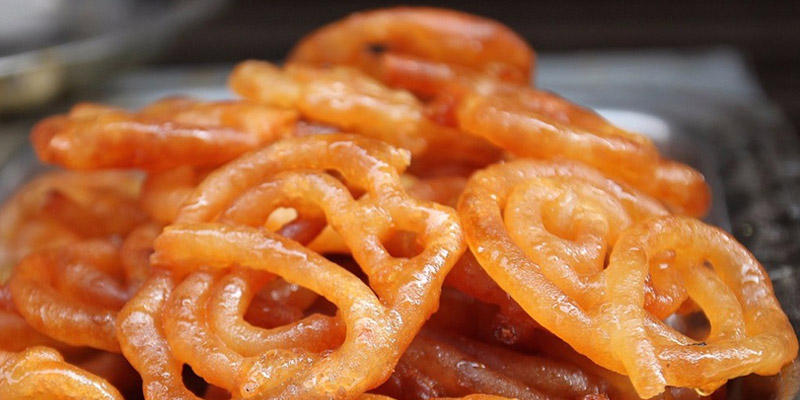From Asia to Europe and North Africa, discover the twists and turns in the story of the jalebi, and how it is reinventing itself for a more modern palate.

The West has its chocolates and the East – its jalebis. So, the next time you order dessert as you enjoy delectable Dining Delights from Axis Bank, and opt for a plate of hot jalebis, do take a minute to reflect on how far the Jalebi has travelled.
Call it what you will - zlabia, zalabiya, zoolabiya , jilbi, jilapi or zelapi – the sweet and syrupy swirls of flavored, sugar-dripping dough have been relished across the Indian subcontinent, in West Asia, parts of Southern Europe and North Africa, for 600 years or more.
While it is difficult to pinpoint the origin of this finger-licking sweet, we can piece together its history and its journey across continents.
The Oxford Companion To Food, an encyclopedia on food, traces the earliest mention of the recipe of this sweet to the 13th century CE, when it was listed in Kitab al Tabih (Book of Dishes), a cook book written by Muhammad bin al-Karim Baghdadi, who compiled one of the earliest such works in Arabic during the Abbasid period in West Asia.
The encyclopedia also makes some geographical linkages. The jalebi is known in Iran as zoolabiya or zulubiya and it is prepared on special occasions and distributed to the poor during the month of Ramzan. Lebanon has the zellabiya (shaped like a finger rather than a swirl). There are also versions of the jalebi found in Turkey, Greece and Cyprus, an indication of just how popular this sumptuous treat is!
The earliest recorded reference to the jalebi in India is from the 15th century CE. This is found in a Jain work, Priyamkarnrpakatha by Jinasura, which is believed to have been composed in 1450 CE. The jalebi also finds mention in later works, including the 17th-century classic, Bhojan-kutuhala by Raghunatha, though under a different name.
More recently, P K Gode, an Indologist at the Bhandarkar Oriental Research Institute in Pune wrote that he found a mention of the jalebi in a work on cookery called the Gunyagunabodhini, which dates back to before 1600 CE. Written in Sanskrit, in verse, this work lists the material used in the sweetmeat and elaborates on different methods to prepare it. These are almost identical to the materials and methods used in making jalebis in India, even today.
While the jalebi obviously travelled through the old trade routes and made its way across parts of Asia and Europe, there are many variations of it, with ingredients that vary as well. For example, in some parts of the country, the batter used to make jalebi consists of urad dal (lentil) and rice flour with a little besan or ground gram and wheat flour. In other parts, it also includes semolina and baking powder. In Bengal, dairy products like chhena (similar to curd) and khoa are added to the jalebi.
Not only ingredients, the way in which this sweetmeat is consumed also varies quite widely. In Afghanistan, jalebis are served with fish during the winter months!
This syrupy sweet has journeyed far but there’s still many a twist left in its tale. Modern styles of cooking like fusion and molecular gastronomy are giving it a new look, producing variations like jalebi caviar and apple jalebi!
Food and culture are closely linked and the jalebi is a testament to the cultural ties India shares with other people but, sadly, this has not been leveraged to our advantage. While we could do so much more to promote this much-loved dessert that has been a part of many cultures in the region, Europe has done a far better job marketing chocolate!
Disclaimer: This article has been authored by Live History India Digital; a Mumbai based Digital Content Company. Axis Bank doesn't influence any views of the author in any way. Axis Bank & Live History India Digital shall not be responsible for any direct / indirect loss or liability incurred by the reader for taking any financial decisions based on the contents and information. Please consult your financial advisor before making any financial decision.




















